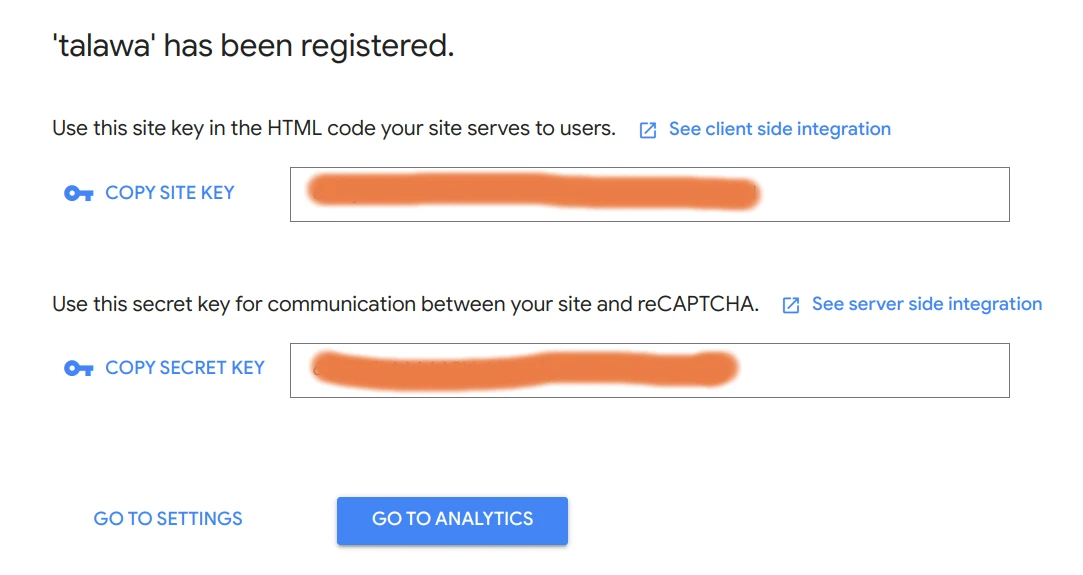Configuration
It's important to configure Talawa-Admin. Here's how to do it.
Automated Setup
You can use our interactive setup script for the configuration. Use the following command for the same.
pnpm run setup
All the options in "setup" can be done manually as well and this is covered in a section below.
Manual Setup
The setup script only modifies the most common configuration parameters. This section explains how to manually edit these values.
The .env Configuration File
A file named .env is required in the root directory of talawa-admin for storing environment variables used at runtime. It is not a part of the repo and you will have to create it. For a sample of .env file there is a file named .env.example in the root directory. Create a new .env file by copying the contents of the .env.example into .env file. Use this command:
cp .env.example .env
.env Parameters
This .env file must be populated with the following environment variables for talawa-admin to work:
| Variable | Description |
|---|---|
| PORT | Custom port for Talawa-Admin development purposes |
| REACT_APP_TALAWA_URL | URL endpoint for talawa-api graphql service |
| REACT_APP_BACKEND_WEBSOCKET_URL | URL endpoint for websocket end point |
| REACT_APP_USE_RECAPTCHA | Whether you want to use reCAPTCHA or not |
| REACT_APP_RECAPTCHA_SITE_KEY | Site key for authentication using reCAPTCHA |
Setting up PORT in .env file
Add a custom port number for Talawa-Admin development purposes to the variable named PORT in the .env file.
Setting up REACT_APP_TALAWA_URL in .env file
Add the endpoint for accessing talawa-api graphql service to the variable named REACT_APP_TALAWA_URL in the .env file.
REACT_APP_TALAWA_URL="http://API-IP-ADRESS:4000/graphql"
If you are a software developer working on your local system, then the URL would be:
REACT_APP_TALAWA_URL="http://localhost:4000/graphql"
If you are trying to access Talawa Admin from a remote host with the API URL containing localhost, You will have to change the API URL to
REACT_APP_TALAWA_URL="http://YOUR-REMOTE-ADDRESS:4000/graphql"
Setting up REACT_APP_BACKEND_WEBSOCKET_URL in .env file
The endpoint for accessing talawa-api WebSocket graphql service for handling subscriptions is automatically added to the variable named REACT_APP_BACKEND_WEBSOCKET_URL in the .env file.
REACT_APP_BACKEND_WEBSOCKET_URL="ws://API-IP-ADRESS:4000/graphql"
If you are a software developer working on your local system, then the URL would be:
REACT_APP_BACKEND_WEBSOCKET_URL="ws://localhost:4000/graphql"
If you are trying to access Talawa Admin from a remote host with the API URL containing localhost, You will have to change the API URL to
REACT_APP_BACKEND_WEBSOCKET_URL="ws://YOUR-REMOTE-ADDRESS:4000/graphql"
For additional details, please refer the How to Access the Talawa-API URL section in the INSTALLATION.md file found in the Talawa-API repo.
Setting up REACT_APP_RECAPTCHA_SITE_KEY in .env file
This is an optional parameter.
You may not want to setup reCAPTCHA since the project will still work. Moreover, it is recommended to not set it up in development environment.
If you want to setup Google reCAPTCHA now, you may refer to the RECAPTCHA section in the INSTALLATION.md file found in Talawa-API repo.
Talawa-admin needs the reCAPTCHA site key for the reCAPTCHA service you set up during talawa-api installation as shown in this screenshot:

Copy/paste this reCAPTCHA site key to the variable named REACT_APP_RECAPTCHA_SITE_KEY in .env file.
REACT_APP_RECAPTCHA_SITE_KEY="this_is_the_recaptcha_key"
Setting up Compiletime and Runtime logs
Set the ALLOW_LOGS to "YES" if you want warnings , info and error messages in your console or leave it blank if you dont need them or want to keep the console clean